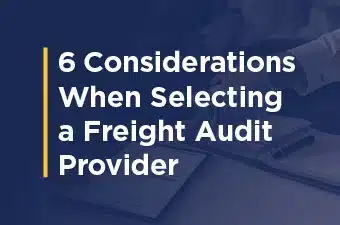In logistics and supply chain management, managing freight bill audit and payment processes is crucial for cost control and operational efficiency. A robust freight audit ensures data accuracy. Pairing it with a strong Transportation Management System (TMS) and robust business intelligence and reporting enhances capabilities and efficiency.
Enhanced Communication and Supply Chain Visibility
Effective communication and real-time visibility are crucial in logistics. Leveraging a robust Transportation Management System (TMS) alongside rigorous freight audit processes brings significant benefits.
A TMS provides real-time visibility into freight movements, enabling efficient tracking of shipments. This visibility improves communication and relationships with customers and carriers.
Organizations can spot inefficiencies and delays in the supply chain by viewing all shipping activities within the TMS. This consolidated view helps identify bottlenecks, too. This enables proactive problem-solving and empowers decision-makers to make informed choices.
Aligning TMS with freight audit processes ensures billing accuracy by cross-verifying invoiced charges with executed shipments. This integration streamlines billing and enhances transparency, building trust with stakeholders.
With improved communication and visibility, organizations can collaborate more effectively with their customers and carriers. They can proactively address any issues or delays, leading to better customer service and stronger partnerships.
Empowering Proactive Freight Cost Management
The advanced capabilities of Transportation Management System (TMS) technology empower organizations to proactively manage unforeseen charges in the shipping process. Tracking accruals and comparing planned and billed charges through a subsequent freight invoice audit process helps organizations uncover discrepancies. Organizations can promptly correct errors when they find them.
Proactively tracking finances helps organizations maintain transparency and better control unexpected expenses, like charges for freight services billed to customers.
Managing freight costs proactively helps organizations choose the best carriers and contracts. Analyzing shipping data and performance metrics enables them to find carriers that provide great value, negotiate better rates and save costs while enhancing efficiency.
By combining TMS with freight audits, organizations can monitor and analyze their freight costs regularly. This helps them find ways to save money, optimize transportation spending and maintain financial stability and competitiveness.
Leveraging Key Performance Metrics for Optimal Efficiency
Combining the use of a TMS and freight invoice audit to ensure accurate transactional transportation data provides organizations with a great chance to establish and use key performance metrics that impact operational efficiency. By analyzing important metrics like freight cost as a percentage of sales, businesses can gain detailed insights into their freight performance and find areas to improve and streamline.
This data-centered approach empowers decision-makers to make well-informed choices, facilitating strategic negotiations with carriers and resulting in more advantageous agreements. These metrics improve operational efficiency and play a crucial role in developing a financially stable and sustainable business model. Leveraging key performance metrics is instrumental in aligning freight operations with overall business objectives and driving continuous improvement.
By monitoring and analyzing key performance metrics, organizations can identify trends, patterns and opportunities for improvement in their freight management processes. This data-driven approach supports proactive decision-making and helps organizations stay ahead of the competition.
Maximizing Benefits by Using Freight Audit and TMS Technology
When companies strategically combine freight audit services with a TMS, a multitude of benefits emerge – this is largely from the fact that there is more data and information to uncover additional opportunities. This integration boosts visibility into the transportation process, allowing organizations to cut costs, streamline operations and improve overall performance.
The alignment of freight audit software technology and TMS capabilities enhances communication with stakeholders, such as customers and carriers, promoting better collaboration in transportation activities. Moreover, this connection offers valuable business intelligence that supports informed decision-making, driving efficiency and compliance in freight management programs.
With the help of the integrated solution, companies can also gain visibility into carrier performance, identifying and addressing any areas for improvement. They can easily monitor on-time delivery, dwell time, transit time and more via the TMS solution.
The integration of freight audit processes and TMS solutions further enhances the accuracy and validity of freight bills for payment. Organizations can now more efficiently process payments, shorten processing time and reduce payment errors.
In conclusion, utilizing best-in-class freight audit practices and TMS technologies is a smart strategy for organizations aiming to improve compliance and efficiency in freight management. Using these tools together, companies can effectively handle freight billing, save costs, improve communication and make strategic decisions for sustainable growth in the logistics industry.
Don’t overlook the importance of the freight audit and payment reconciliation process in your overall freight management strategy. With the right technology and audit processes, you can save money and build better relationships with customers and carriers. Investing in a strong TMS and coupling it with an equally robust freight audit solution brings significant benefits to organizations seeking to enhance compliance and efficiency.










